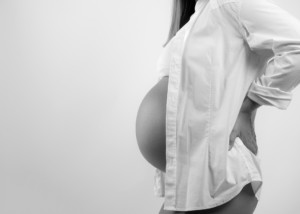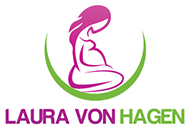Hip hip hooray, it’s transfer day! How do we get that embryo to stick? There are numerous factors that affect implantation rates. Egg quality, uterine lining thickness and pattern, inflammation and blood flow just to name a few.

My goal as a fertility focused Naturopathic Doctor is to help you get pregnant and most importantly, stay pregnant.
What’s Going On Inside the Uterus?
The endometrial lining of your uterus undergoes several important cyclical changes each month. The first half of your cycle, the proliferative phase, is dominated by estrogen. This is when your lining thickens as the body prepares for an egg to be released. Post-ovulation, we enter the progesterone dominant secretory phase as the body prepares for implantation. Impaired transformation of the endometrial lining has been associated with recurrent pregnancy loss and unexplained infertility.
Why Didn’t My Transfer Work?
- Embryo Quality- The majority of miscarriages in the first trimester are caused by genetic abnormalities of the embryo. This is referred to as aneuploidy. These abnormalities are often not compatible with life and will miscarry in the first trimester. A genetically normal embryo is referred to as euploid. Several studies have shown a correlation between embryo quality and rates of euploidy. Keep in mind though it is not a perfect prediction. Higher quality embryos are linked to better pregnancy outcomes (because they are more likely to be euploid), but it is still possible for poorer quality embryos to turn into perfectly healthy babies. If a patient experiences multiple failed transfers, I will recommend doing Preimplantation genetic screening (PGS) to rule out any genetic causes.
- Inflammation, Autoimmunity and Impaired blood flow- Rare clotting disorders such as thrombophilias can cause inflammation and impede blood flow to the uterus. Although rare, testing may be required to rule these out if patients have repeated early losses. Another important aspect is the vaginal microbiome. We want a higher percentage of antiinflammatory lactobacillus species compared to more pathogenic species. We can now use the makeup of the vaginal microbiome (types and amounts of bacterial species) to help predict IVF outcomes.
- Thin lining or poor endometrial morphology – Most fertility clinics will not proceed with an embryo transfer unless the uterine lining is >7 mm and has a ‘triple layer’ or trilaminar appearance. These two factors, thickness and pattern are associated with significantly higher implantation rates. A persistently thin lining will lead to repeated cancelled cycles and is associated with higher rates of pregnancy loss.
What’s next?
Implantation failure can be frustrating, complex and difficult to deal with cycle after cycle. As you can see, there are a variety of factors that can cause repeated implantation failure. Several key nutrients and nutraceuticals can play an important role in improving the uterine environment and increase the chances of a positive pregnancy test. Ready to connect and learn more? Book a 15-minute complimentary consult to get started today.

